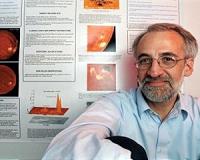 |
Redondo Beach CA (SPX) Oct 12, 2010 NASA's James Webb Space Telescope continues to make significant progress, successfully completing a series of sunshield vent tests that validate the telescope's sunshield design. Northrop Grumman is leading Webb's design and development effort for the space agency's Goddard Space Flight Center. Tests were conducted the last week of August in vacuum chambers at Northrop Grumman Aerospace Systems' Redondo Beach facility. Using flight-like sunshield membranes, the tests are designed to mimic the rapid change in air pressure the folded sunshield will experience the first minutes of launch. Several different folding configurations each underwent a series of 90-second depressurization tests and proved that the stowed sunshield will retain its shape during launch and allow trapped air to escape safely, both critical to sunshield deployment and performance. "This is another significant risk reduction activity that continues to move sunshield development forward," said Scott Willoughby, Webb Telescope program manager for Northrop Grumman Aerospace Systems. "We have demonstrated the effectiveness of our sunshield vent design and will use these test results to validate our analytical models in the next few months." "While adequate venting is a design consideration for all spaceflight hardware, this was a particularly unique challenge for the sunshield given the large volume of trapped air in the membrane system at launch," said Keith Parrish, Webb telescope sunshield manager at NASA's Goddard Space Flight Center in Greenbelt, Md. "From the beginning of its development, venting features have been a critical part of the overall sunshield design. Since we cannot vent-test the actual flight article, these tests have shown the design works and the sunshield will vent safely on its way to orbit." Three critical full-scale sections of the sunshield were tested: the section on top of the spacecraft around the tower that supports the telescope; the vertical pallet structure that contains the folded sunshield membranes, and the intervening four-bar linkage area that is folded in an inverted V-shape. The flow paths are complex and the sunshield material, a tough plastic film, Kapton E, is only one- to two-thousandths of an inch thick and covers a surface area the size of a tennis court. Another series of complementary tests slated for October will inject air into the stowed sunshield test article and provide more detailed data used in evaluating analytical models. The Webb Telescope's sunshield is a five-layer structure the size of a tennis court. Each of the five membrane layers is about as thick as a human hair (one to two-thousands of an inch thick). The layers are separated from each other and held in place by spreader bars and deployable booms. The sunshield will absorb and deflect solar light to keep the telescope operating at cryogenic temperatures so infrared sensors can see into the most distant galaxies. The James Webb Space Telescope is the world's next-generation space observatory and successor to the Hubble Space Telescope. The most powerful space telescope ever built, Webb will observe the most distant objects in the universe, provide images of the very first galaxies ever formed and see unexplored planets around distant stars.
Share This Article With Planet Earth
Related Links James Webb Space Telescope Space Telescope News and Technology at Skynightly.com
 NSF Grant Will Upgrade And Expand NJIT Radio Telescope Array
NSF Grant Will Upgrade And Expand NJIT Radio Telescope ArrayNewark NJ (SPX) Oct 08, 2010 A $5 million National Science Foundation (NSF) grant to upgrade and expand a set of radio frequency antennas at Owens Valley Solar Array (OVSA) has been awarded to NJIT. The new facility is expected to help scientists better understand the nature of solar flares which greatly interest government, industry and the military. "Space weather incidents such as coronal mass ejections and solar f ... read more |
|
| The content herein, unless otherwise known to be public domain, are Copyright 1995-2010 - SpaceDaily. AFP and UPI Wire Stories are copyright Agence France-Presse and United Press International. ESA Portal Reports are copyright European Space Agency. All NASA sourced material is public domain. Additional copyrights may apply in whole or part to other bona fide parties. Advertising does not imply endorsement,agreement or approval of any opinions, statements or information provided by SpaceDaily on any Web page published or hosted by SpaceDaily. Privacy Statement |